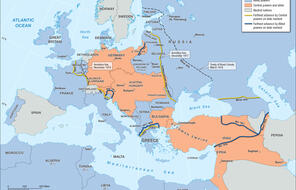The “Immigration Problem”
At a Glance
Language
English — USSubject
- Civics & Citizenship
- History
- Human & Civil Rights
- The Holocaust
Efforts to control immigration had the support of many Americans throughout the nineteenth and early twentieth centuries. The end of World War I saw new, restrictive immigration measures put in place by the US government. While the United States was involved in World War I for only a short period of time, the experience—and especially the perceived failures of the Treaty of Versailles and the League of Nations—convinced many Americans that staying out of Europe’s affairs was the best course of action. Likewise, a surge of new immigrants following the war and a rocky transition to a peacetime economy strengthened calls for new restrictions.
Another factor that contributed to support for immigration restrictions was many Americans’ embrace of now-debunked theories about race and genetics. In the period following World War I, the country was segregated—legally in places and by custom in others. At times, segregation was enforced by violence, including lynching. Many Americans believed that some "races," classes, and individuals were superior to others. A new branch of scientific inquiry known as eugenics attempted to justify these prejudices. Advocates of eugenics promoted policies aimed at solving the nation's problems by ridding society of "inferior racial traits."
Immigration legislation, culminating in the 1924 Johnson-Reed Act, reflected eugenic ideas about who should be allowed to enter the nation. The act set quotas, a specific number of immigration visas that could be issued each year for people born in each European country. The quotas were calculated to prioritize the immigration of so-called “desirable” immigrants from northern and western Europe. They limited immigrants considered to be less “racially desirable,” including southern and eastern European Jews. People born in Asia and Africa were barred from immigrating to the United States entirely on racial grounds.
How to Cite This Reading
Facing History & Ourselves, "The “Immigration Problem”," last updated May 31, 2019.













